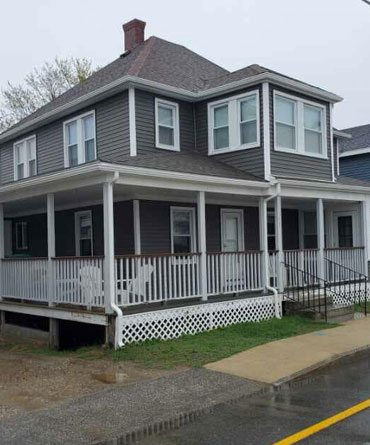The cold months of winter can bring along a lot of inconveniences, but one of the worst for homeowners is the presence of ice dams. If allowed to occur, ice dams can wreak havoc on various parts of the house, leading to costly repair bills. Here are a few greats ways to prevent your home from ice dams in the winter.
What are Ice Dams?
After a snowfall in the colder months, the heat from the sun during the day melts the snow on the roof, and it flows towards the gutters. Overnight, when the temperatures drop, the water will freeze again to form ice. If the water cannot flow freely away from the roof, it will freeze up in the gutters or along the eaves of a roof. Any further snowmelt will not be able to pass these ice dams and will freeze and collect.
Why are Ice Dams Bad?
Ice is heavy. The more ice that collects in the gutters, the more the gutters will struggle to stay up. This will lead to sagging and bending, which is not only aesthetically unpleasing but also ruins the functionality of the gutters themselves.
Ice dams can also cause cracks to form in nearby shingles, weakening the roof. And when the ice begins to melt, it has nowhere to go but through the roof, leading to leaks in the home and possibly mold growth.
How To Prevent Ice Dams
Repairing a roof or gutters can become expensive, so the best thing to do is prevent ice dams from occurring in the first place. Here are a few things to check:
- Roof ventilation. It may sound strange to invite cold air into the home during winter, but proper roof ventilation will ensure that the roof stays cold and the snow doesn’t melt.
- Clean the gutters. This is one of the most important ways to prevent ice dams. Keeping the gutters free of debris like leaves and twigs will allow free passage of the snowmelt to flow away from the home.
- Get rid of the snow. If you are able to use a ladder or get onto the roof, you can rake the snow off. If there’s no snow to melt, there will be no ice buildup.
- Water/Ice Barriers. Installing a water and ice barrier to your roof will add even more protection from damage and ice dams.
- Add more heat. Heat cables can be installed around the roof and gutters to keep everything warm enough to wash away and not freeze overnight. If you choose to use these heated coils, make sure they are installed near the downspouts to prevent it from freezing while it flows down.
If you live in a climate that gets regular sub-freezing temperatures, preventing ice dams from forming is crucial, especially if you don’t want to replace your roof or gutters anytime soon. Need more information or assistance? Get in touch with All Weather Exteriors for expert help.


















